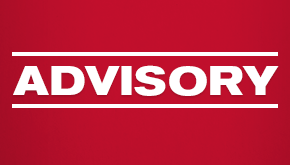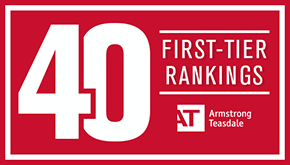Agribusiness and Food Issues to Watch for 2021
As 2021 kicks off, the Food and Drug Administration (FDA) and related regulatory bodies will continue to take center stage as a result of numerous issues arising out of the COVID-19 pandemic. The ongoing pandemic, coupled with a change in administration, will result in another tumultuous year for the agribusiness and food industries. Our Agribusiness and Food industry team has compiled its annual overview of key issues that may impact related industries throughout the year.
Pending Administration Changes
As of Jan. 20, 2021, the new U.S. administration will result in changes to leadership of key regulatory bodies impacting the agribusiness and food industries. To date, President-elect Biden has identified a number of nominees and appointees to Cabinet and key regulatory posts, including:
- Tom Vilsack, secretary of the U.S. Department of Agriculture (USDA)
- Xavier Becerra, secretary of the U.S. Department of Health and Human Services (HHS)
- Michael S. Regan, administrator of the Environmental Protection Agency (EPA)
- Dr. Rochelle Walensky, director of the Centers for Disease Control and Prevention (CDC)
President-elect Biden has not yet formally identified a potential Food and Drug Administration (FDA) commissioner, though a number of former FDA commissioners and deputy commissioners have been discussed as top contenders.
The incoming administration has committed to restore funding of various programs coming out of federal agencies, such as USDA conservation programs. However, it is as of yet unknown whether large-scale structural changes made to federal agencies in the last four years, including the move of the USDA’s Economic Research Service from Washington D.C. to Kansas City, Missouri, will be reversed.
COVID-19-Related Initiatives/Countermeasures
We also anticipate a number of COVID-19-related initiatives and countermeasures to come into play, including:
- Acceleration of development of vaccines and treatments for COVID-19 with emphasis placed on the FDA’s authority to issue Emergency Use Authorization (EUA), while also ensuring that products moving through this process are sufficiently safe and effective before distribution. EUA review is a mechanism used to facilitate the availability of medical treatments and countermeasures during public health emergencies. Although EUA authority enables the FDA to allow the use of unapproved medical products, or unapproved uses of approved medical products, in emergency circumstances, it does not obviate rigorous testing of such products.
- Potential extension of the Public Health Emergency (PHE) currently set to expire on Jan. 21, 2021, to facilitate expedited FDA review of vaccines and treatments for COVID-19.
- Establishment of a COVID-19 task force under President-elect Biden. The task force is co-chaired by Dr. Vivek Murthy (surgeon general during the Obama administration), Dr. David Kessler (FDA commissioner during the Bush and Clinton administrations), and Dr. Marcella Nunez-Smith (associate dean for health equity research at Yale University). The current stated objectives for the task force are to work with state and local health officials on a plan to address the COVID-19 pandemic and its racial disparities, as well as to develop reopening plans for schools and businesses.
- Continued emphasis on production of Personal Protective Equipment (PPE).
- Modification of FDA’s temporary policies and guidance for manufacturers of products such as hand sanitizer, which may include potential fees, increased oversight and regulatory burdens.
Consumer Fraud Claims
Class actions targeting highlighted ingredients (ex. vanilla), health representations, and—the perennial favorite—“all natural” statements on human food and animal food product labels, continued to be popular with plaintiffs in 2020 and will likely remain so throughout 2021. These types of cases exploit broad state consumer protection laws (with attractive attorneys’ fees allocations) and definitional gray areas or silence from the FDA in order to claim that consumers have been deceived, misled or otherwise damaged by food, beverage, supplement or pet food manufacturers.
One specific category of products which may receive increased attention from plaintiffs’ attorneys specializing in consumer fraud claims are personal and surface area cleaning products. As a result of the COVID-19 pandemic, there was a rush to market for companies to introduce sanitizing products. Depending on the purpose of the products and nature of claims made, these products are subject to extensive regulation by the EPA or FDA. Plaintiffs’ attorneys have already begun to target producers and distributors of these products who were less than rigorous in evaluating and supporting labeling claims (ex. “kills 99.9% of bacteria”), and there will likely be many companies in 2021 who receive demand letters invoking consumer fraud statutes even if they were diligent in ensuring regulatory compliance.
Enhanced Regulation of Human Food and Supplements
The change in administration in early 2021 may result in an amplification of federal regulation of food products and dietary supplements. During the Trump administration, the number of compliance inspections and enforcement actions decreased as a result of budgetary and headcount reductions at federal agencies like the FDA, EPA, and USDA. The Biden administration is anticipated to use Executive Orders to adjust prior policies and redirect funds to federal agencies in order to return to enforcement efforts initiated during the Obama administration.
In particular, efforts to provide a federal definition of “natural,” redefining the term “healthy,” may be resumed under the new administration. Similarly, formal guidance and regulations regarding products containing hemp and CBD, which have been pending since the reclassification of hemp in the 2018 Farm Bill, may be advanced in 2021. There may also be a renewed focus on food safety in light of the fact that President-elect Biden was involved in the enactment of the Food Safety Modernization Act during the Obama administration; and FDA and USDA facility inspections could increase following the stabilization of the pandemic.
Implementation of USDA’s National Bioengineered Food Disclosure Standard
The National Bioengineered Food Disclosure Standard Act of 2016 preempted a patchwork of state regulations targeting genetically engineered (GE) or bioengineered (BE) food products. As a result of the Act, the USDA promulgated the National Bioengineered Food Disclosure Standard (NBFDS) outlining labeling and disclosure requirements for various food products that are BE. 7 CFR Part 66. Producers, importers and retailers with human food products subject to NBFDS should be aware of the current January 1, 2022, labeling compliance deadline.
The final regulations define BE food as “food that contains genetic material that has been modified through in vitro recombinant deoxyribonucleic acid (rDNA) techniques and for which the modification could not otherwise be obtained through conventional breeding or found in nature.” 7 CFR 66.1(1)(i). Food products meeting this general definition are defined by certain categories. However, there are exemptions for (1) food served in a restaurant or similar retail food establishment, (2) very small food manufacturers, (3) food containing an inadvertent or technically unavoidable amount of BE substances up to 5% of each ingredient, (4) food derived from an animal which consumed feed containing a BE substance, and (5) food certified under the USDA’s Agricultural Marketing Service’s National Organic Program. 7 CFR 66.5.
The BE food definition does not include food where it is not possible to detect modified genetic material. The issue of detectability is a critical concept impacting whether a refined or processed food product that includes an ingredient expressly identified as a BE substance is nevertheless exempt from the disclosure requirement. Under the NBFDS, a BE substance can be established as not detectable through (1) records verifying the substance is sourced from a non-BE crop, (2) records verifying that the food has undergone a process “validated” to make any BE component substance undetectable, or (3) records confirming the absence of a BE substance through testing.
The mandatory disclosure requirement applies to human food products that fall within the jurisdiction of both the FDA and USDA. All food products subject to the NBFDS must have compliant labeling after January 1, 2022. As a result, in 2021, producers, importers, and retailers—if they have not already done so—should consider assessing whether the human food products they sell qualify as BE. If a certain food product requires a BE disclosure, then appropriate labeling modifications should be made. Even if mandatory disclosure is not required, a “derived from BE” voluntary disclosure may still be appropriate. In the event BE disclosure is not relevant to a given product, a recordkeeping system supporting that conclusion is essential.
EPA’s Enhanced Enforcement of FIFRA
We have seen a significant uptick in EPA and state enforcement actions aimed at products making pesticidal claims. EPA, under provisions of the Federal Insecticide, Fungicide and Rodenticide Act, known as FIFRA, has been aggressively searching for “new” COVID-19-related cleaning products (most imported) making pesticidal claims, such as “kills bacteria and viruses,” “disinfects,” and “prevents COVID-19.” These products have been in great demand by retailers and consumers since the outbreak of COVID-19, leading to many new entrants in the market, some of whom are not familiar with EPA’s strict regulation of products which make pesticidal claims. New pesticide products require a significant lead-time to get through the FIFRA approval process and, although EPA has an expedited review process for COVID-19 disinfectants, it continues to closely regulate labels and claims, including the iconography. We expect this trend to continue into 2021, as EPA (and FDA) catch up with the flood of new entrants into the market.
Homeland Security/U.S. Customs and Border Protection
EPA and FDA have been working closely with U.S. Customs to identify personal health and pesticidal products flooding into the U.S. from overseas markets without meeting EPA FIFRA or FDA Over-the-Counter drug requirements. We expect this trend to continue and for the agencies involved to develop more sophistication in “catching” products at border entry points.


































